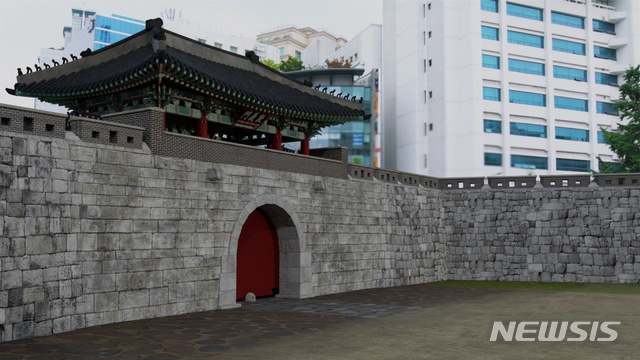Physical Address
304 North Cardinal St.
Dorchester Center, MA 02124
Physical Address
304 North Cardinal St.
Dorchester Center, MA 02124

Seoul City is considering the restoration of Donuimun Gate, a significant landmark from the Joseon Dynasty. The restoration plan will be carried out in two phases and is estimated to cost around 400 billion won. Donuimun Gate is the only remaining gate among the four major gates of the Hanyang Fortress.
Donuimun Gate, established in 1422 during the reign of King Sejong, unfortunately, met its demise in 1915 due to road expansion carried out by the Japanese occupation. Previous attempts to restore the gate in 2009 were abandoned due to cost and traffic congestion concerns.
The restoration plan consists of two phases. The first phase, scheduled to be completed by 2026, involves the transformation of the Donuimun Museum Village into a downtown park. This museum village was established in 2018 during the term of former Seoul Mayor Park Won-soon.
The second phase, scheduled until 2035, includes the underground construction of a road and the restoration of Donuimun Gate. A 400-meter underground road, with the Seoul History Museum as the starting point and Gangbuk Samsung Hospital as the endpoint, will be built. This underground road will also feature the restored Donuimun Gate and a park.
While the restoration plan has not been finalized, Seoul City emphasizes the need for continuous evaluation and budget considerations. Collaboration with the Cultural Heritage Administration is also crucial to ensure compliance with preservation guidelines.
The restoration of Donuimun Gate aims to preserve and promote its historical and cultural significance. This project will contribute to the preservation of Korean cultural heritage, activate cultural tourism, and enhance the aesthetic appeal of the surrounding area.
The restoration of Donuimun Gate represents a pivotal milestone in the ongoing efforts to preserve and showcase Korea’s rich history and cultural heritage. The success of this project relies on the collaboration among various stakeholders, including Seoul City, cultural heritage authorities, and experts in architecture and history. Additionally, the restoration project is expected to create job opportunities, attract visitors, and contribute to local revitalization and economic growth.
If you’re wondering where the article came from!
#



